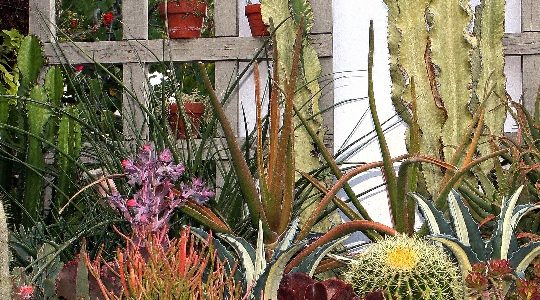A lot of succulent arrangement ideas have been circulating online and they look very pretty planted in a pot, or a terrarium and even a fancy tray. But how do we maintain them and keep them as fresh looking as they are in the pictures you see on Instagram and Pinterest? Well, stick around! We’ll give you tips, do’s and don’ts and hopefully this article will help you your Insta-Worthy succulents flourish!
Let’s start this journey by using the following guiding questions:
1. Are you a beginner?
Is this your first time taking care of succulents? Although it’s not that really complicated to grow succulents, it’s still best to start with easy-to-care-for varieties if you are a first-timer. You need to decide if you want the indoor or the outdoor type of succulent so that you can prepare their spot accordingly, and of course, to understand their watering needs. If you’re choosing indoor succulents, you will most likely have to put them near a window with sheer curtains to avoid direct light. Or, place them somewhere far away enough from direct sunlight so they won’t dry out. Please do read the labels when picking out a succulent. The good news is that when you go for indoor succulents, you won’t be needing to water them often since they do not like retaining too much water or moisture. Sunlight is the best source to help your plants to thrive, retain their radiant colors and maintain their healthy leaves.
2. What are the easy-to-care-for varieties of succulents?
You can start off with succulents that are naturally green like Jade Plant or Aloe Vera. Haworthia (more commonly known as Zebra Cactus) and Gasteria are also excellent choices. If you like hanging plants, you can also try String of Bananas and String of Pearls.
3. Have you decided which container to use for your succulent arrangement?
Whether you pick out a cute ceramic pot or a durable plastic container, it’s important that you select the one that has a great drainage hole that will help your succulent breath when you water them. I know that you’re dying to put them in terrariums or glass containers just like the ones you see on social media. That’s great too, but it’s not the ideal container if you’re hoping to keep them looking fresh and vibrant. Pick out a container that has right amount of space for your succulents to grow and thrive. Good drainage and breathability are very important factors to maintain healthy succulent roots, stems and leaves.
4. What is the best type of soil to utilize when planting succulents?
We mentioned that good drainage and breathability are important when picking a container; this also applies to soil. Succulents do not like soggy or super dense soil, they prefer soil that dries out quickly. It’s best to combine half potting soil with other inorganic particles like coarse sand, crushed granite or pumice/perlite to maintain airflow and the right level of moisture.
5. How do you know if your succulents are thriving or dying?
When you see the lower leaves of your succulents dropping, you might think that means it’s starting to die. But that’s not necessarily true! It may be that your succulent is just adjusting to it’s new environment and there’s no need to worry. However, if the topmost leaves are turning brown or starting to fall off, pay attention! It could be an indication that there’s overwatering or there are pests/diseases invading your plant. Try to investigate and adjust the soil, and the container you’re growing it in.
Those are the basics! I hope these questions somehow help as you start your own succulent garden at home. Don’t be afraid to try new things when taking care of plants. Janet Kilburn Phillips once said and I quote, “There are no gardening mistakes, only experiments.” So go on, be brave and just enjoy gardening. You can do it!
By Mel

